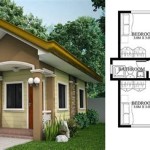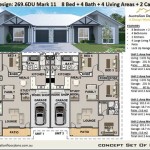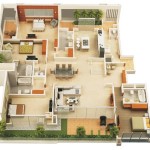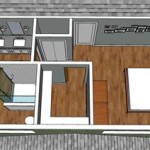How To Make A Building Plan
Creating a building plan is a critical first step in any construction project, whether it's a new house, an addition to an existing structure, or a commercial building. A well-executed building plan serves as a blueprint for the entire project, guiding the construction process and ensuring that the final result meets the owner's needs and complies with all relevant regulations. The process involves careful consideration of various factors, from site analysis and design concepts to structural integrity and code compliance. This article outlines the key steps involved in creating a comprehensive building plan.
1. Define the Project Scope and Requirements
Before any drawing begins, it's crucial to define the project's scope and specific requirements. This involves a thorough understanding of the owner's goals, needs, and budget. Clearly articulating these parameters will prevent misunderstandings and costly changes later in the project. This initial phase includes several key elements:
Needs Assessment: This involves understanding the purpose of the building, the functions it needs to accommodate, and the number of people who will be using it. For example, a residential building plan needs to incorporate the number of bedrooms, bathrooms, living areas, kitchen requirements, and any specific needs of the occupants, such as accessibility features.
Budget Allocation: Establishing a realistic budget is essential for making informed decisions throughout the planning process. The budget will influence the size, materials, and finishes of the building. It's advisable to include a contingency fund to account for unexpected costs.
Regulatory Research: It's essential to research and understand all applicable building codes, zoning regulations, and permit requirements. These regulations dictate various aspects of the building, including setbacks, height restrictions, fire safety measures, and environmental considerations. Contacting local building departments and zoning offices is essential to gather accurate and up-to-date information.
Site Analysis: The characteristics of the building site significantly influence the design. A thorough site analysis involves evaluating factors such as soil conditions, topography, existing vegetation, drainage patterns, and utilities. This information will inform decisions about foundation design, site grading, and landscaping.
Conceptual Design: Based on the needs assessment, budget, regulations, and site analysis, preliminary design concepts can be developed. These concepts should explore different layouts, building forms, and architectural styles. This stage involves creating sketches and schematic drawings to visualize the potential building design.
2. Develop Detailed Architectural Drawings
Once the conceptual design is approved, the next stage involves creating detailed architectural drawings. These drawings provide specific information about the building's dimensions, materials, and construction details. Accurate and comprehensive architectural drawings are essential for obtaining building permits and guiding the construction process. The key components of architectural drawings include:
Floor Plans: Floor plans are orthographic projections showing the arrangement of rooms and spaces on each level of the building. They include dimensions, wall thicknesses, door and window locations, and the placement of fixtures and appliances. Floor plans provide a clear understanding of the building's layout and circulation patterns.
Elevations: Elevations are orthographic projections showing the exterior facades of the building. They depict the building's appearance from different viewpoints, including the front, rear, and sides. Elevations include details such as window and door sizes, roof slopes, and exterior finishes.
Sections: Sections are vertical cut-through drawings that reveal the internal construction of the building. They show the relationship between different floors, the height of ceilings, and the construction of walls, floors, and roofs. Sections are essential for understanding the building's structural system and detailing the connections between different building components.
Details: Detail drawings provide enlarged views of specific building components, such as wall assemblies, window and door installations, and roof connections. These drawings illustrate the materials, dimensions, and construction methods for complex areas of the building. Detailed drawings are crucial for ensuring that the building is constructed according to the design specifications.
Schedules: Schedules provide a comprehensive list of all doors, windows, finishes, and fixtures used in the building. They include information such as sizes, materials, manufacturers, and model numbers. Schedules ensure that all components are specified correctly and that the contractor can order the necessary materials without errors.
Dimensioning and Annotations: All drawings must be accurately dimensioned and annotated to provide clear instructions to the contractor. Dimensions should be consistent and easy to read, and annotations should clearly identify materials, finishes, and construction methods.
3. Incorporate Structural and MEP (Mechanical, Electrical, Plumbing) Systems
In addition to architectural drawings, a building plan must incorporate structural and MEP systems. These systems are essential for the building's safety, functionality, and comfort. Collaboration between architects, structural engineers, and MEP engineers is necessary to ensure that these systems are properly integrated into the building design.
Structural Engineering: Structural drawings show the building's structural system, including foundations, beams, columns, and walls. They specify the materials, sizes, and connections for all structural components. A structural engineer is responsible for designing the structural system to withstand gravity loads, wind loads, seismic loads, and other environmental forces. These drawings often include:
- Foundation plans, showing the layout and dimensions of the foundations.
- Framing plans, showing the layout and dimensions of the structural framing members.
- Details of structural connections, showing how different structural components are connected.
MEP (Mechanical, Electrical, Plumbing) Engineering: MEP drawings show the layout and design of the building's mechanical, electrical, and plumbing systems. These drawings specify the location of equipment, ductwork, piping, and wiring. MEP engineers are responsible for designing these systems to provide comfortable indoor environments, safe and efficient power distribution, and reliable water and waste disposal. The specific elements depend on the building type, but often include:
- HVAC (Heating, Ventilation, and Air Conditioning) plans, showing the layout of ductwork, equipment, and controls.
- Electrical plans, showing the location of electrical panels, lighting fixtures, outlets, and wiring.
- Plumbing plans, showing the layout of water supply lines, drain lines, and fixtures.
- Fire protection plans, showing the location of sprinklers, fire alarms, and other fire safety equipment.
Coordination: It is essential to coordinate the architectural, structural, and MEP drawings to avoid conflicts and ensure that all systems are properly integrated. This involves reviewing the drawings to identify potential clashes and making adjustments to the design as needed. Building Information Modeling (BIM) software can be used to create a three-dimensional model of the building, which can help to identify and resolve conflicts before construction begins.
4. Ensure Code Compliance and Obtain Permits
Before construction can begin, the building plan must be reviewed and approved by the local building department. This process ensures that the building complies with all applicable building codes, zoning regulations, and other requirements. Obtaining the necessary permits is essential for legal construction and avoiding costly delays. The specific requirements for code compliance and permit acquisition vary depending on the location and the type of building. Typically, the process involves:
Code Review: A thorough review of the building plan is conducted to ensure that it complies with all applicable building codes, including structural, fire safety, energy efficiency, and accessibility requirements. This review may involve consulting with code officials and making revisions to the plan as needed.
Zoning Compliance: The building plan must also comply with zoning regulations, which govern the use of land and the size and location of buildings. This review ensures that the building meets setback requirements, height restrictions, and other zoning limitations.
Permit Application: Once the building plan is reviewed and approved, a permit application is submitted to the local building department. The application typically includes the building plan, site plan, and other supporting documents. The building department will review the application and issue a building permit if all requirements are met.
Inspections: During construction, the building department will conduct inspections to ensure that the building is being constructed according to the approved plan and that all work complies with building codes. Inspections may be required for various stages of construction, including foundation, framing, plumbing, electrical, and mechanical systems. Addressing any deficiencies identified during inspections is essential to obtaining a certificate of occupancy.
Creating a comprehensive building plan is a complex process that requires careful planning, attention to detail, and collaboration between various professionals. By following these steps, you can ensure that your building project is well-designed, code-compliant, and ready for construction.

Floor Plan Creator And Designer Free Easy App

Floor Plans Learn How To Design And Plan

How To Draw A Floor Plan The Simple 7 Step Guide For 2024

Create Floor Plan

Easy To Build Houses And Floor Plans Houseplans Blog Com

Easy Home Building Floor Plan Cad Pro

Draw Floor Plans With The Roomsketcher App

How To Make A Floor Plan Plans Basic Draw Curtain In

Create A Floor Plan Of Your House Instructables

Draw Floor Plans With The Roomsketcher App








